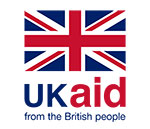This blog forms part of a blog series to be published over the coming weeks as we investigate how the digital and social exclusion of persons with disabilities are heightened during the pandemic and how mobile and digital solutions can combat the barriers.
The COVID-19 pandemic has demonstrated that, if we want everyone in society to have access to vital, timely and up-to-date information, universal design should be at the core of service and product development. Today, many people who are at a higher risk because of health conditions or needs, can’t access the right information in accessible formats and therefore are disproportionately impacted adding to other measures such as lockdown, social distancing and face coverings.
In an earlier blog, the GSMA Assistive Tech team highlighted SignLine’s adapted service, launched by mobile operator Grameenphone, for the inclusion of persons with hearing impairment and the deaf during the COVID-19 pandemic and beyond in Bangladesh. Building on those findings, today we are evaluating barriers to accessing timely information and how mobile and other related assistive technologies present an undeniable opportunity in filling the gaps and addressing the barriers.
Access to real-time information is key to prevention and spread of COVID-19
Access to information is key in preventing and slowing down the spread of COVID-19. However, a number of barriers exist for persons with disabilities. In fact, a study by Ulema Research Institute on Disability and COVID-19 impact through an online survey, found that among 196 respondents from 36 counties in Kenya and approximately 72 per cent of which had a disability, only around 24 per cent of respondents with a disability were able to attain information on COVID-19 in accessible format, while access to digital and e-learning resources was available to just under 10 per cent of those respondents.
Therefore, as restrictions in some parts of the world continue and concerns around a second wave prolong uncertainties, it is imperative to revisit the way vital information is being communicated. Here are a number of barriers that exacerbate access to information for persons with disabilities:
- Lack of accessible formats, such as braille, increases the use of tactile communication to obtain information for visually impaired or blind persons increasing risk of infection
- Face coverings and social distancing measures impact people who reply on additional physical support, or, for example, who may rely on facial expressions and lip reading to communicate
- Lack of sign interpreters or audio descriptors during national and international COVID-19 briefings
- Lack of local dialects or other languages used in multilingual countries when auto transcripts are used and thus, audio or video content is automatically converted into written formats
These barriers not only create greater risk of contracting COVID-19, for example because carers might need to come into a home, they also exacerbate existing conditions e.g. increased isolation. International and local organisations have launched campaigns and are calling for more resources as well as accessible forms of information.
Private and public sector combat barriers through digital solutions
Initiatives by the private sector include mobile operators who have used their reach and resources to break the barriers to accessible information. For instance, Orange Jordan allocated a hotline to persons with hearing impairment for inquiries and medical concerns about COVID-19, in order to provide trusted and reliable communication. This was made available to users of all networks.
Furthermore, local digital businesses have played a significant role in providing information from governments in usable formats. Indian start-up Trestle Labs, Kibo app allows users with visual impairments to listen to text in eBooks and scanned documents in 96 different languages. In the early days of lockdown and with a lack of accessible government sites, the existing Kibo user base sought information regarding the pandemic from the company’s support line. In response the team created the COVID-19 Assist feature, providing up-to-date government guidelines such as social distancing measures, quarantine and self-assessment information for COVID-19.
The value of these services enabled by mobile technology is seen in user engagement. Trestle Labs founder, Abhishek Baghel, told the GSMA they had a clear increase in the number of active mobile devices from April with an acceleration through to early July when restrictions began to ease in India. Further, the number of average pages captured and read by Kibo nearly doubled from March to April against flat growth previously and since it has now grown more than double. Further, time of daily activity increased since the pandemic onset. This uptake of services is not only positive for the start-up to develop brand loyalty but more importantly also indicates a clear need for more accessible formats and what mobile enabled technologies can achieve for persons with disabilities not only in times of a crisis but these growth trends are also sustained over time and after social mobility has been reintroduced.
Finally, the public sector and the community response has also been powerful in reaching citizens with accessible information. For example, local Disabled Persons Organisations (DPOs) have used audio or video messages to share vital information. For instance, in Kenya, an initiative co-run by Silvia Muturi, a Social Entrepreneur, created videos with Kenyan Sign Language on health information such as hygiene and social distancing measures, checking for symptoms, and de-mystifying COVID-19. These accessible videos were then shared via WhatsApp directly with persons with disabilities and through other channels, including the social media platforms of DEAFineListen Community on YouTube and Facebook.
Call to action – more is needed to drive accessibility during the pandemic and beyond
In order to reduce the spread of the virus and misinformation, and to increase an equal rights based response to COVID-19 a number of imminent government actions are needed:
- Provide information in accessible formats such as readable by braille
- Disseminate information in multiple formats including text messages, audio and visual disability friendly formats
- Provide sign language and closed captioning in all press briefings, national addresses and on social media posts
- Make sure public documentation is easy to read and provide written or audio description of charts used in public addresses
- Use speech to text applications to facilitate communication in in-person settings and adopt a positive attitude towards communicating



